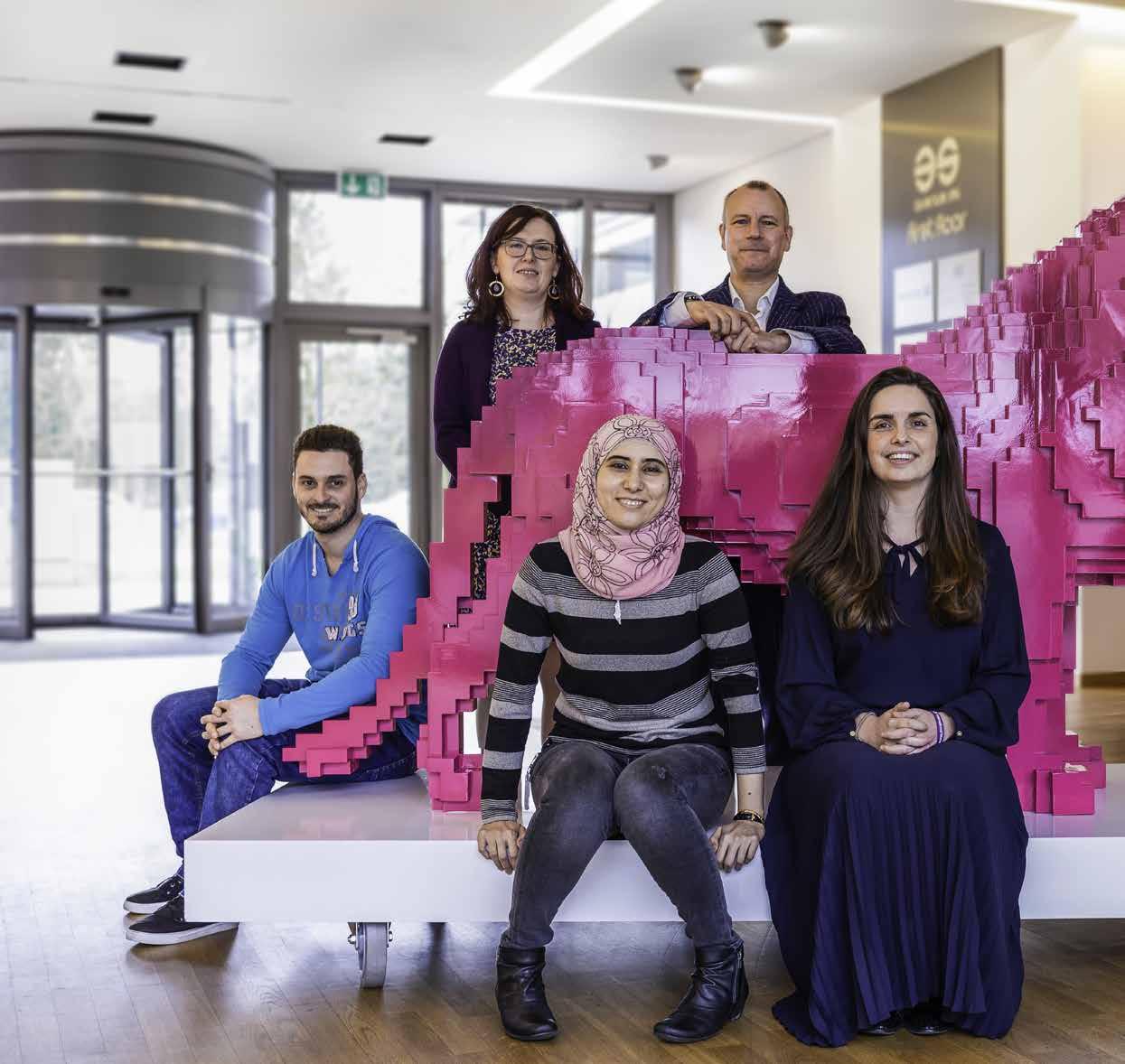Research Unleashed
Space Invaders and Security Guards When visiting Dr Miguel Olivares Mendez's office, the first thing that immediately jumps out at many is a stack of A3 papers printed with what look like giant Space Invaders. Black and white and coarsely pixelated, the mysterious figures covering his desk are in fact his latest drone research project.
are investing in the project as part of their ongoing upgrades to their facility’s security.
“In fact these are ArUco augmented reality markers, not Space Invaders” Mendez explained. “We can place them on the building we are interested in and train the drones to use them as stable reference points. They are different enough from the rest of the environment that they cannot be mistaken for anything in the natural world. But that is as close to anything ‘alien’ as they get.”
“You might think that most centre employees would be IT professionals. But they aren’t. Data centre teams are actually made up of mostly security professionals,” said Mendez. That’s because data centres are responsible for storing and securing data for hundreds (and maybe thousands) of customers, and in the information age, data is the new gold. “It is a constant race to stay one step ahead of hackers,” said Mendez, “And if the bad guys can use drones to exploit blind spots in security camera systems, then the good guys need to find a way to preempt that.”
These augmented reality markers are important tools for Mendez and his team, who are developing a new drone navigation system for secure environments where WiFi and GPS – the backbone of current navigation technologies – are unavailable or unreliable. Their research is being conducted in partnership with LuxConnect, who operate two large data centers here in Luxembourg, and
LuxConnect’s security drones will rely on the algorithms Mendez and his lab are developing to run autonomously. Should an anomaly be detected along the building’s perimeter, the drone will automatically alert the security team and provide a visual feed. This will keep the staff out of harm’s way and focused on their most important tasks. For this to work, the drones need very sophisticated
situational awareness, without access to the technologies typically used for the task (WiFi and GPS). That is where Mendez's newest research – as well as the “Space Invaders” – come in. “Data centres are usually covered in a metal exterior to protect their WiFi from hackers. This bounces GPS signals around and makes them less accurate. On top of that, it also disrupts the drone’s compass,” said Mendez. “It is a problem that also exists in cities, which researchers call ‘urban canyons’. Our research is developing an alternative navigational method that can be used in these types of environments.” To do this, they combine computer vision technology, machine learning, and deep learning with more conventional drone tech, like light detection and ranging (LiDAR). The “Space Invaders” covering Mendez's desk are essentially training wheels, used to provide benchmarks for testing the accuracy of this new spatial awareness technology. Ultimately, when this technology matures, it will no longer need them – but it may nonetheless look a little bit like something out of science fiction •
It is a constant race to stay one step ahead of hackers, and if the bad guys can use drones to exploit blind spots in security camera systems, then the good guys need to find a way to preempt that
24














